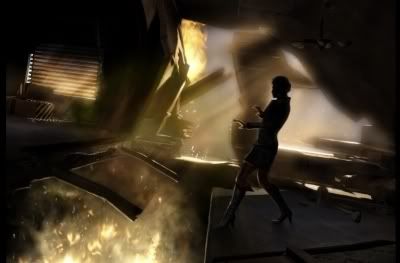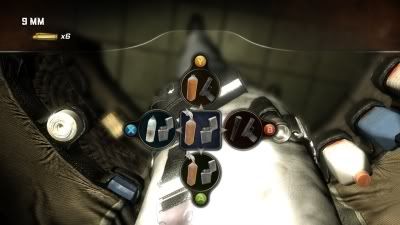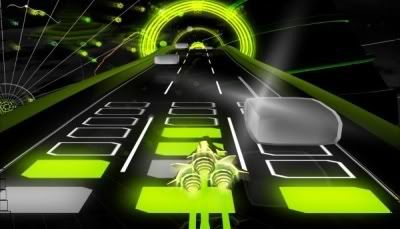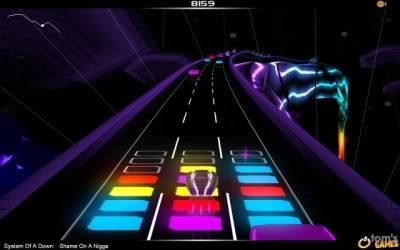
Anyway, the opening moments of Alone In The Dark are promising. It has a professional cinematic style which is enhanced by the gorgeous lighting engine and physics effects. The set pieces and environments all look fantastic and they really help to add to the atmosphere. The first stage sees you (the unintroduced hero Edward Carnby) escape from a New York skyscraper which is literally being torn apart by a strange creature that seems to permeate the very walls of the building. It's an absolute joy to observe (I was watching friends play at this point) but the problems finally arose when the controller was handed to me.

I have two main gripes with this game. Firstly, its control scheme is shockingly difficult to get to grips with and we ended up spending the first two stages finding the buttons more of a problem than the actual on-screen obstacles. AITD essentially suffers from Trespasser Syndrome, as it uses the right analogue stick to control the hands of Edward. For example, if you are holding a chair you can tilt the stick to the right and he will hold the chair towards the same direction. Quickly pushing the stick across to the left makes Edward swing it with force so you can hit enemies or objects. This high level of control reminds me of Trespasser in that the system is great in concept, but falls down in its overly-complex execution as you clumsily twist and twirl the item you're holding. The game also suffers by utilising a single button for several important actions. You use A to run, pick up items, turn your flashlight on and off (assuming you have taken it out with LB first) and operate various objects within the world like switches. Its an awkward method that sees you constantly trying to remember what order you should press buttons in to perform the most menial tasks. Oh and by the way, I hope you don't seriously think you can open a door whilst holding a broom at the same time do you? Good, because the game will take the liberty of forcing you to drop it first.

The second case in which Alone In The Dark falls short is its unforgiving difficulty and insistence on repeating sections over and over. There are a large number of quick reaction-based events that require you to pre-empt the challenges the game is about to throw at you. If you fail, you die. Instantly. Thankfully there are a lot of checkpoints so you rarely have to repeat much, but we still found it occurring with frustrating frequency. It's as if AITD hasn't evolved since the 1980s style of punishing gameplay. The game also features a strange and unique feature which allows you to skip entire sections in the same way you would with DVD chapters. Exactly why Infogrames decided to include this feature is beyond me, but it's almost as if they had finished the game and realised that no one would have the patience to sit through each segment time and time again so they built in a level skip cheat. Only it's not a cheat.

I realise at this point that I haven't said much about the plot which is usually my main focus of a game. That's because it was so obscured with awkward gameplay that I didn't really pay much attention to it. It revolves around a dark secret beneath the facade of New York City which has been kept by some sort of cult for many years. I haven't played any of the other games in this franchise so I don't know if I was supposed to understand what was going on or not, but the game didn't exactly help me out when it came to setting the scene and forming any sort of idea as to what was going on. The story is revealed by cutscenes filled with contrived dialogue, lacklustre voice acting and an unnecessary amount of expletives (presumably because it makes the game more 'adult').

All in all, Alone In The Dark is a promising game with a lot of potential and it's almost breath-taking to watch. Unfortunately, it's fundamentally flawed in a number of critical areas and in ways that games really shouldn't be flawed after so many years of learning from past mistakes. Rent it or watch someone play it.
P.S. Your female companion is extremely irritating, utterly useless and will not cease her incessant pestering and complaining. I wish the 'real world rules' applied to a fire extinguisher to the head.
P.S.2. Clicking the right analogue stick to blink for the first 10 minutes of the game gets old very quickly.

